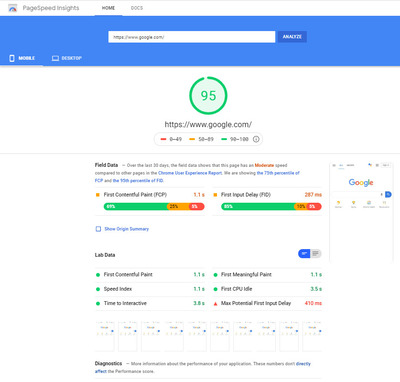Google recently announced that their Instant Search feature will no longer function on desktop. Although Google Instant Search was lauded when it was first released, changes in consumer behavior have led the search engine giant to reconsider its value.
Google Instant search was first launched nearly a decade ago. Marissa Mayer, who led this development, described the new feature as a “fundamental shift in search.” The technology made many headlines as the digital world witnessed a new advancement in helping users get the information they desired even faster. According to Google, the Instant Search featured saved users between two and five seconds per search. Multiplied out over the billions of searches performed on Google per month, and it becomes clear why this technology was noteworthy. With Google Instant Search, as users began to type their questions and queries into the Google Search Bar, they would see the results of the suggested searches appear, allowing them to find the answers they sought without having to finish typing. Now, however, Google has decided that this feature no longer offers concrete value to users in the changing digital ecosystem. Here is what marketers should know about these developments.
Gain Search Insights With Instant
Why did Google decide to get rid of Google Instant Search?
How people use search continues to change rapidly. Mobile has outpaced desktop since 2015. Today, 71% of minutes spent online are on mobile devices in the United States, with Canada and the UK not far behind, at 62% and 61% respectively. This dramatic increase in mobile usage means that users employ different devices and input methods. Google Instant does not benefit these mobile users, and since they dominate the market, the feature itself has begun to quickly lose value.  Google has said, however, that they still plan on trying to improve speed and the user experience across all devices. In a statement to Search Engine Land, Google said:
Google has said, however, that they still plan on trying to improve speed and the user experience across all devices. In a statement to Search Engine Land, Google said:
We launched Google Instant back in 2010 with the goal to provide users with the information they need as quickly as possible, even as they typed their searches on desktop devices. Since then, many more of our searches happen on mobile with very different input and interaction and screen constraints. With this in mind, we have decided to remove Google Instant, so we can focus on ways to make Search even faster and more fluid on all devices.
It is important to note that Google Instant Search is a separate feature from the search suggestions. As users type into the search bar, regardless of their device, they will still receive the suggestion query complete that they can then click on and receive their results. Unsure how much all the Google algorithm updates will impact you? See how worried you should be.
How will this impact searchers?
The impact on marketers and site owners will likely be minimal. Mobile devices did not use this feature. Since on-the-go users and mobile devices dominated search for the past few years, becoming 57% of traffic on the web in 2017, many people have become accustomed to not having it available. Search professionals should, however, pay close attention to Google’s statement, quoted above. Google said clearly that they intend to continue to find ways to make search a faster user experience for users across all devices. For marketers, optimizing sites for speed, including both mobile and desktop, will be the best course of action. Remember to avoid excessive cookies or images that might slow down your load time. For pages that would be applicable for AMP, you can consider marking up appropriately to make your site easily accessible for the mobile, on-the-go user.

Since the focus of Google’s impending efforts will be to create a smoother search experience, we also recommend that marketers pay close attention to opportunities on Google to present this rapid, helpful information. This means finding opportunities for Quick Answers and related rich snippets and structured data, like schema markup. Google continues to update the algorithm and the SERP to maximize the experience for the end user. Expect to see more advancements and greater pushes towards an improved site speed from Google as they move away from the old Instant Search feature to towards new technology. Site owners need to continue to focus on user experience, relevance, and on improving their site speed to succeed.

